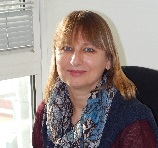
Magali Remaud Simeon
INSA - Université de Toulouse, France
Title: Mixing enzyme discovery with engineering for sucrose-derived bioproducts: the case of GH13 and GH70 polymerases
Biography
Biography: Magali Remaud Simeon
Abstract
The exploration of the natural diversity, through data mining, functional genomics and/or metagenomics is an efficient mean to discover enzymes showing new functions or improved performances. These approaches can be further completed or run in parallel with semi-rational protein engineering based on structure/function studies or directed molecular evolution inspired from nature. Which of these alternatives are the best ones, in terms of effort, rapidity and efficiency? This is an open question to which a definite answer can be hardly formulated a priori. For illustration, we will take a few examples from our most recent work on glucansucrases from GH13 and GH70 families. These enzymes are naturally very efficient transglucosylases. They use sucrose as substrate and catalyze polymerization of its glucosyl units as a main reaction. Depending on their specificity, structures varying in size as well as in glycosidic linkage types can be obtained, thus giving access to an interesting panel of biopolymers. A campaign of genome sequencing and data mining allowed the isolation of atypical enzymes with new product specificities. In particular, a hyper efficient polymerase producing a gel-like polymer and, in contrast an enzyme synthesizing directly from sucrose a polymer of well-controlled low molar mass could be characterized. Structure-function studies combined with mutagenesis assays allowed us to decipher some of the molecular mechanisms behind the control of the polymer size and enzyme processivity. Another key property of these catalysts is coming from their ability to glucosylate a broad spectrum of hydroxylated molecules. Computational protein design, structurally-guided engineering and also random approaches such as neutral evolution was implemented for a fine tuning of their acceptor specificity toward non-natural acceptors such chemically protected disaccharides for vaccinal applications, polyol, flavonoids, or various chemicals. These various approaches will be described and discussed with regard to the engineering objectives.

